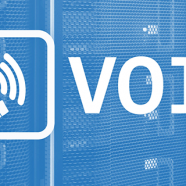Is the System That I’m Using Today Actively Protecting Students and Faculty?
Is the System That I’m Using Today Actively Protecting Students and Faculty?
VoIP is the future of communication. This can include connecting students, faculty, and all staff together. You may have noticed talk that more people are moving away from the old bell and paging systems. This is because VoIP has given a new dimension to the way we can communicate. Not only does it save time, it also creates a broader space for communication. What we mean is that VoIP is accessible from any geographic location, from any device, and by any internet connection. It’s easy to use, relatively inexpensive, and much more effective.
However, the big question we face is: Are the systems we are currently using in our educational institutions effective in protecting the students and the faculty?
That’s what we wanted to discuss today! Keep reading to find out our professional insight of this matter, as we are extremely hands on with this scope of work and understand the criticality of it.
Let’s start with Kari’s Law. This is a law that came about after the Kari murder incident.
The story goes that she was brutally killed in her hotel room in 2013. However, there were multiple attempts by her daughter to dial 9-1-1, and they all failed. It was later determined that if her daughter had been able to reach emergency services, Kari would have survived the attack. Could you imagine?
So, on February 16, 2018 Kari’s Law was signed into federal law. The law is designed to ensure that anyone, anywhere can reach emergency services and that critical location data is provided with that call.
February 16, 2020 – Kari’s Law is in effect requires the following on all new / upgraded systems:
- Direct access to 9-1-1 without an access code.
- Routing to the 9-1-1 PSAP (public safety answer point) with no interception.
- On-site notification to staff of who dialed 9-1-1.
Following that unfortunate event, the law was introduced, and required compliance of the law was made mandatory to avoid future mishaps. Many schools, colleges, and other educational institutions are slowly switching to the new system, complying with Kari’s Law.
Kari’s Law and Ray Baum’s Act clearly state that all multi-line phone systems in the U.S. (like those found in hotels, schools, and offices) have to enable direct dial to 9-1-1, direct routing to a 911 center, and there should be on-site notification of a 9-1-1 call which includes a detailed “dispatch-able location” to minimize the response time. The law which was signed in 2018, started going into effect on February 16, 2020.
It is vital for us to familiarize ourselves with these laws and their potential impact.
Kari’s Law is now transforming how emergency communications are made by mandating that public safety be built into every aspect of a telephone system. Kari’s Law makes it so that every person can easily call for help, and be easily located by emergency services.
In just the last few years there have been some unfortunate incidents happening in our schools. These surprising and shocking events can take place in any educational institution. The better we can be prepared, the safer our students and staff will be. More and more, you’ll see that schools and educational institutions are now requested to adapt new communication systems. Compliance issues that may have existed in telecommunication systems that are being replaced are now becoming strictly followed.
There are a number of service providers out there who can install new systems in institutions. Depending upon your budget and facilities offered, you can choose the best option and ensure safety for your kids. Veragy is a consulting firm that helps you right size your organization needs and the best technology solutions, as we truly want what is best for your organization and the students that you serve.
What do you think of these new compliance laws in our technology? Did you know about The Kari’s Law? Let us know! For more information on technology, and VoIP for education please follow us please follow us on social media on Facebook and LinkedIn.
Legal Disclaimer: Veragy is not affiliated and does not endorse the products or services offered by any externally linked site. They are mentioned for the perusal and thought provocation of the reader. Use at your own risk.
Paging Systems & Bell Systems: Antiquated or Effective?
Paging Systems & Bell Systems: Antiquated or Effective?
In both businesses and education, there’s a critical amount of information that must get shared both quickly, and accurately. From scheduling, emergency communications, and health concerns, it’s important information can get shared correctly and in a timely way.
Unfortunately, there are a lot of gaps currently present in these types of communications. There are however many solutions to this communication problem. A couple of examples: There’s retrofitting, or new technology designs that are made for old systems. It’s also possible to set up an entirely new custom framework. These designs can also be created to facilitate faster communications along with higher accuracy.
If you’re in education and need to update or install a new bell system, along with a scheduler, knowing the basics of bells, clocks, and paging systems can help you decide how to move forward. Realistically though, it’s only a matter of time until paging and bell systems will no longer be effective. We’ll explain why…
Analog, paging, and bell solutions can be static or expandable. It depends what your exact need is as well as the manufacturer. The different packages usually will include a standard number of bell schedules. They also have the ability to use software for lockdown and evacuation, if ever needed. So what is the real difference between the two system types? The difference lies in how signal is transmitted. Analog systems send information in a traditional, baseband format, while IP solutions transmit information digitally.
VoIP is the next big trend. As with the development of modern, cutting edge technology, most institutions, especially schools and colleges, are adapting to VoIP systems that include bell systems and paging systems. Companies are switching to a VoIP extension for their paging systems so that they can come out of the analog world as well. These organizations are ditching the traditional paging and bell systems as VoIP adds a layer of dimension, expandability, and reliability in communication. Also VoIP provides safety and security upgrades for businesses and schools including their ability to be in alignment with their personnel, whether that is employees, managers, students, teachers, or staff.
With all of that said, traditional, analog paging and bell systems at this point are antiquated, not ineffective. Do you agree? We’d love to hear your feedback!
For more information on safety at school, and new technology please follow us on social media on Facebook and LinkedIn.
Legal Disclaimer: Veragy is not affiliated and does not endorse the products or services offered by any externally linked site. They are mentioned for the perusal and thought provocation of the reader. Use at your own risk.
Safety at School: Are My Classrooms, Faculty, and Staff Connected?
Safety at School: Are My Classrooms, Faculty, and Staff Connected?
It is undoubtedly and unanimously agreed that the health and safety of our students is the utmost priority. This is why our schools, communities, and local leaders want to do everything they can to make schools as safe as possible. One way that schools are doing this today is by upgrading their phone to a VoIP (Voice over IP) system.
What Is A VoIP System?
A VoIP (Voice over Internet Protocol) system allows all of the users to make or receive calls from anywhere as long as there is an Internet connection. The conversation travels through the computer network instead of the traditional landline phone lines.
What Are The Benefits Of A VoIP System To A School?
Reliability
In most cases a VoIP system can be more reliable than a traditional telephone system. The VoIP infrastructure is vast in size and distributed geographically. A complete power failure to a school (whether caused by natural calamity or man-made) would not affect the phone system at all, even with no power. For example, a staff member could login from anywhere (desk, computer, smartphone, tablet) and carry on communications with emergency personnel. They would also have access and ability to use all the features of the system.
Integration
It is simple to integrate VoIP systems with other technologies. This includes integrating with other products such as emergency onsite notifications, integration with digital signage, and other remote devices.
Enhanced 911
In any emergency situation, the responding personnel can be certain of where an emergency is taking place. This allows appropriate authority to get there sooner. With advanced 911, schools have the ability to transmit the room number, or building location to emergency services when they are contacted.
Cost Saving
Budget is always a critical factor when considering services for schools. A key feature for VoIP systems is that, when partnered with the proper vendor, the cost of a fully featured VoIP phone system is less than paying for POTS (plain old telephone system) lines.
As we can see, implementing VoIP in the school communication system is not only beneficial, but also calls for urgency. Is important to align the classroom, staff, and faculty so that in case of any emergency, everyone can be on one call and can act accordingly. Doing this will reduce the time delay and help to mitigate the situation rapidly.
The era of legacy telecommunication systems has long gone. Although we are still using mobile communication, very soon it will be well replaced by VoIP system, and rightfully so! What do you think about integrating VoIP in productive ways for classrooms, faculty, and staff?
For more interesting articles and tips like this, please follow us on social media on Facebook and LinkedIn.
Legal Disclaimer: Veragy is not affiliated and does not endorse the products or services offered by any externally linked site. They are mentioned for the perusal and thought provocation of the reader. Use at your own risk.
4 Reasons Why Today Small Businesses Need VoIP
4 Reasons Why Today Small Businesses Need VoIP
VoIP, short form for Voice Over Internet Protocol, is a commonly used service in businesses across nearly every industry.
A common misconception of this service is that it is a phone system only suitable for businesses on a bigger scale. However, the fact is that this is a wrong concept. VoIP has a lot of features that small business owners can leverage!
One of the most significant aspects of VoIP is that instead of a regular or analog phone line, VoIP allows callers to make and receive calls using a broadband or dedicated internet connection. This technology converts sound into digital packets and transfers it through the internet, similar to other types of data like the email.
Because of it’s digital nature, a VoIP phone system can be set up in any way that you can imagine it. If you can dream it up, we can set it up!
So despite the most obvious reason, why do small businesses need to get set up with VoIP? Here are four reasons why:
1. Security
VoIP is much more secure when compared to the traditional phone connection. Having standardized encryption protocols, this modern phone system keeps your calls and data away from those who would want to intercept them. This is nearly impossible in traditional phone connections.
2. Portability
As long as there is an internet access, your VoIP phone system will work, regardless of their geological location. The most interesting part of VoIP is that it allows you to make and receive calls from multiple devices. For example, you can receive calls on your smartphone, your desktop phone, and in software on your desktop or laptop simultaneously. This ensures more frequent and efficient customer engagement with your business since your customer can reach a business at any time.
3. Cost-Effective
The OPEX (Operating Costs) for VoIP are remarkably lower than the traditional phone companies. Here are specific instances where your organization can save money through VoIP:
- Voice over Internet Portal remarkably cuts down direct costs local and global calls.
- An organization doesn’t necessarily need to maintain separate networks for data and phones.
- VoIP allows to a user take office extension phone anywhere they go using a smartphone, tablet, or laptop, thus reducing the company’s mobile phone costs.
4. Clear and Outstanding Call Quality
VoIP, as an emerging technology, has expanded in a way that the caller can not tell whether you’re using VoIP or a traditional landline. Today’s VoIP phone service has even surpassed traditional landline in terms of call quality.
That’s why at Veragy Solutions we believe it makes sense for small businesses that you reduce the operating cost of traditional phone services and switch to VoIP for your business. VoIP can be a great cost saver, and a super-efficient tool to boost up your start up, small businesses, venture etc.
Veragy Solutions is proud to offer VoIP services. To get a quote or learn more about how we can help your business, please reach out to us at 888-501-5432.
For more interesting articles and tips like this, please follow us on social media on Facebook and LinkedIn.
Legal Disclaimer: Veragy is not affiliated and does not endorse the products or services offered by any externally linked site. They are mentioned for the perusal and thought provocation of the reader. Use at your own risk.
5 Important Facts You Should Know About VoIP And UCaaS for Your Business
5 Important Facts You Should Know About VoIP And UCaaS for Your Business
What in the world are VoIP and UCaaS?
Let’s explore the differences between the these high-tech acronyms: VoIP and UCaas.
VoIP. According to voip-info.org, “VoIP is an acronym for Voice Over Internet Protocol, or in more common terms phone service over the Internet. If you have a reasonable quality Internet connection you can get phone service delivered through your Internet connection instead of from your local phone company.”
In other words, VoIP is a voice service provider for inbound and outbound calls. In fact, many businesses and organizations run their phones over some type of Voice Over IP provider.
So VoIP makes sense. What is UCaaS?
As said by Nextiva, “UCaaS, or Unified Communications as a Service, is an enterprise service method for streamlining all communications via cloud-based software services. If you’ve ever heard the saying ‘everything is going into the cloud,’ then you may already have an idea of what is Unified Communications as a Service.”
A simple way to understand the difference is that UCaaS combines multiple or all types of business communications into a single or simply-managed system. This can include voice calls, texting, chatting, faxing, video conferencing, and screen sharing. Within UCaaS, VoIP is usually the chosen solution for voice services.
So why is everyone talking about VoIP and UCaaS?
1. Save Money
“The average amount of savings businesses can expect range anywhere from 50% to 75% when they switch to using VoIP instead of conventional phone services,” according to a study from ACC Telecom. One reason is because the cost of local calls can drastically decrease along with other calling fees. Another reason is because with VoIP you can easily change or update your system without the extra hassle of purchasing new hardware.
2. Every Department Benefits
With a modern UCaaS in place, all different forms of communication are available. This provides simplicity of shared analytics data across people, teams, and entire organizations. Communication in the cloud increases productivity and is easy to leverage across departments. For example a phone conversation might turn into a video screen share or video conference across multiple users.
3. It’s The Future, Now
No longer will you have to worry about your technology falling behind as it continues to advance. Although there will be software updates along the way, it’s not difficult to stay up to date. Plus, you won’t be stressing about outdated pieces of hardware that can be expensive to replace.
4. Productivity Boost
Having the proper components of a unified communication system can create a bump in productivity. Through VoIP communications employees can work remotely, if desired. Working remotely has been proven to increase productivity by 20%. UCaaS creates engaging ways for customers and employees to collaborate, along with the use of traditional VoIP communications.
5. Advanced Features
Mentioned recently by Sangoma, “Features such as auto-assistant, call routing, music on hold, presence, find-me-follow-me, and many others help smaller businesses appear more professional and capable of exceptional customer service- which always increases business.” It’s a great way that can help your business appear larger, and more established with no extra cost!
These are only a few important facts VoIP and UCaas that can help your business benefit. Veragy Solutions is proud to offer VoIP and UCaas services. To get a quote or learn more about how we can help your business specifically, give us a call at 888-501-5432.
For more interesting articles and tips like this, please follow us on social media on Facebook and LinkedIn.
Legal Disclaimer: Veragy is not affiliated and does not endorse the products or services offered by any externally linked site. They are mentioned for the perusal and thought provocation of the reader. Use at your own risk.






Recent Comments